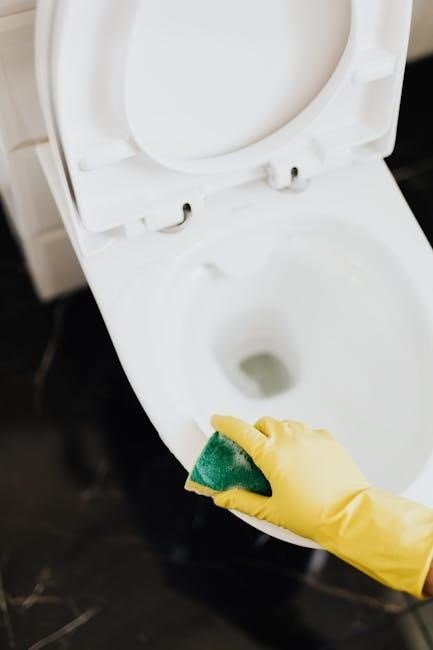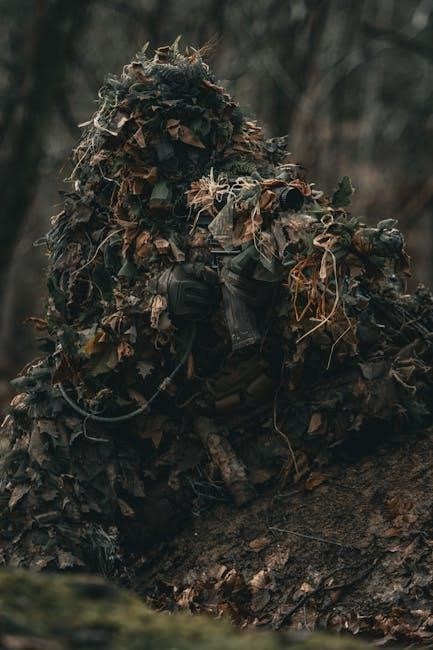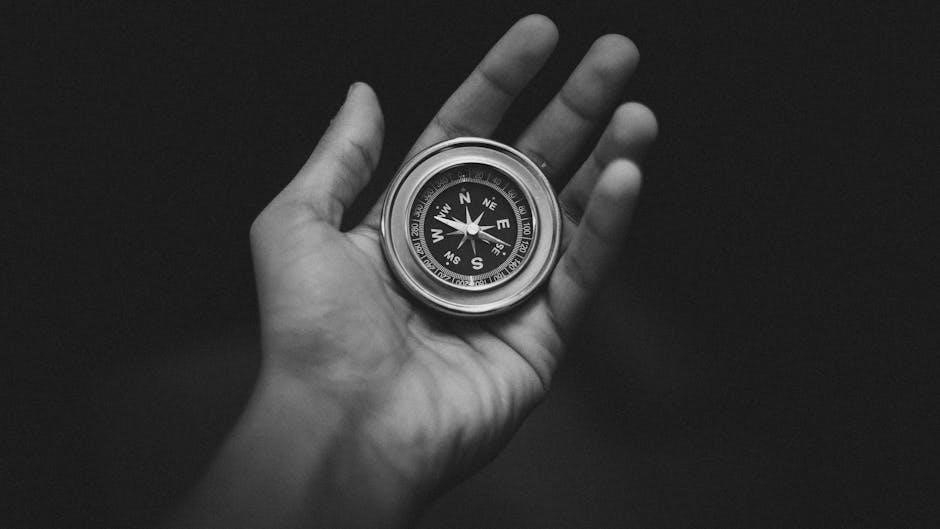
Stealth Cam Manual: A Comprehensive Guide

Navigating your Stealth Cam is easy with the user manual. It contains all the information needed to operate your trail camera. This guide offers insights into camera setup‚ troubleshooting tips‚ and optimal usage for capturing wildlife.
Overview of Stealth Cam Models
Stealth Cam offers a diverse range of trail cameras‚ each designed with specific features and capabilities to cater to various scouting needs. Understanding the different models is crucial for selecting the right camera for your particular application‚ whether it’s for wildlife observation‚ hunting‚ or security purposes. Stealth Cam models can be broadly categorized based on their features such as image resolution‚ detection range‚ trigger speed‚ infrared technology (No Glo‚ Low Glo‚ or standard IR)‚ and connectivity options (cellular or non-cellular). Some popular models include the STC-Z3IR Titan‚ known for its robust design and reliable performance; the STC-WD2X V230 and STC-WD3MT V330MT‚ which offer wide-angle lenses for broader coverage; and the STC-I890 Rogue‚ praised for its advanced features and image quality. The Skout No Glo series‚ such as the STC-SK732NG‚ is favored for its covert operation‚ minimizing the risk of spooking game. Additionally‚ Stealth Cam offers models with cellular capabilities like the Fusion series‚ allowing for remote image transmission and camera management via the Stealth Cam COMMAND app. Each model comes with its own user manual‚ providing detailed instructions on setup‚ programming‚ and troubleshooting. By reviewing the specifications and features of each model‚ users can make an informed decision and maximize their scouting experience. Whether you need a basic camera for simple monitoring or a high-end model with advanced features‚ Stealth Cam has a solution to meet your needs. Always refer to the specific user manual for your model to ensure proper operation and to take full advantage of its capabilities.
Quick Start Guide: Initial Setup
Getting your Stealth Cam up and running is a straightforward process‚ and this quick start guide will walk you through the initial setup steps. First‚ you’ll need to install the batteries and SD card. Open the camera case and insert the recommended number of AA batteries‚ usually eight‚ into the battery compartment‚ ensuring you align the positive (+) and negative (-) terminals correctly as indicated inside the compartment. For optimal performance‚ use new‚ high-quality alkaline or lithium batteries. Next‚ locate the SD card slot and insert a Class 10 SD card. The SD card is essential for storing the images and videos captured by the camera. Make sure the card is properly seated in the slot. Once the batteries and SD card are installed‚ power on the camera. Most Stealth Cam models have an ON/OFF switch or button. Upon turning on the camera‚ the startup sequence will display the Stealth Cam logo for a few seconds before entering the setup or view mode. In this mode‚ you can navigate the menu to configure basic settings such as date‚ time‚ and capture mode (photo‚ video‚ or time-lapse). Use the navigation buttons to adjust the settings according to your preferences. After setting the date and time‚ choose your desired capture mode. For initial testing‚ set the camera to photo mode with a medium resolution. This will allow you to quickly verify that the camera is functioning correctly. Finally‚ mount the camera in your desired location. Use the provided strap or an optional mounting accessory to securely attach the camera to a tree or post. Ensure the camera is positioned correctly‚ avoiding direct sunlight or obstructions that could trigger false captures. Following these steps will get your Stealth Cam ready to start capturing images and videos in no time. Remember to consult the full user manual for detailed instructions and advanced settings specific to your model.
Battery Installation and Removal

Proper battery installation and removal are crucial for ensuring the optimal performance and longevity of your Stealth Cam. Start by opening the camera case to access the battery compartment. Most Stealth Cam models use AA batteries‚ typically eight in number‚ housed within the compartment. When installing the batteries‚ carefully observe the polarity markings (+ and -) inside the compartment. Align the positive (+) end of the battery with the corresponding marking and the negative (-) end with its marking. Incorrectly inserting the batteries can prevent the camera from powering on or even damage the device. For best results‚ use new‚ high-quality alkaline or lithium batteries. Lithium batteries are generally recommended for colder climates due to their superior performance in low temperatures. Avoid mixing old and new batteries‚ as this can reduce the overall battery life and potentially cause leakage. Similarly‚ do not mix different types of batteries (e.g.‚ alkaline and lithium) within the same camera. Once the batteries are correctly installed‚ securely close the battery compartment door. Ensure that the door is properly latched to prevent moisture from entering and damaging the camera’s internal components. To remove the batteries‚ open the battery compartment door and gently extract each battery. If the batteries are difficult to remove‚ use a small‚ non-metallic tool to assist in lifting them out. Be careful not to puncture or damage the batteries during removal‚ as this could lead to leakage or corrosion. Dispose of used batteries responsibly‚ following local regulations for battery recycling or disposal. Avoid throwing batteries in the trash‚ as they can be harmful to the environment. Regularly check the batteries in your Stealth Cam and replace them as needed to ensure continuous operation. Battery life can vary depending on camera settings‚ usage patterns‚ and environmental conditions. By following these guidelines for battery installation and removal‚ you can maximize the performance and lifespan of your Stealth Cam.
Understanding Camera Programming
Mastering the programming features of your Stealth Cam is essential for tailoring its performance to your specific monitoring needs. Stealth Cams offer a range of customizable settings that allow you to optimize image capture‚ trigger sensitivity‚ and overall functionality. To begin programming your camera‚ locate the program dial or menu button inside the camera case. The available settings typically include mode selection‚ date and time configuration‚ image resolution‚ trigger delay‚ and infrared (IR) flash intensity. Mode selection allows you to choose between photo‚ video‚ or time-lapse modes‚ depending on your desired method of capturing activity. Date and time settings ensure that your images are accurately timestamped‚ providing valuable context for your recordings. Image resolution settings determine the quality and file size of your captured images‚ with higher resolutions resulting in more detailed images but larger file sizes. Trigger delay settings control the amount of time the camera waits after detecting motion before taking another picture or video‚ preventing excessive captures of the same event. IR flash intensity settings adjust the brightness of the infrared flash‚ allowing you to optimize nighttime image quality while minimizing battery drain. In addition to these basic settings‚ some Stealth Cam models offer advanced features such as burst mode‚ which captures multiple images in rapid succession‚ and password protection‚ which prevents unauthorized access to your camera’s settings and data. Understanding how to navigate the camera’s menu system and adjust these settings is crucial for maximizing its effectiveness. Consult your Stealth Cam’s user manual for detailed instructions on accessing and configuring each setting. Experiment with different settings to find the optimal configuration for your specific monitoring environment and target species. By taking the time to learn and understand your Stealth Cam’s programming features‚ you can unlock its full potential and capture valuable insights into the wildlife activity in your area.
Memory Card Installation and Management
Proper memory card installation and management are critical for the reliable operation of your Stealth Cam and ensuring that you capture all the desired images and videos. Stealth Cams typically use SD (Secure Digital) or MicroSD memory cards for storing captured media. Before installing a memory card‚ it’s essential to select the correct type and capacity. Consult your Stealth Cam’s user manual to determine the compatible memory card type and maximum capacity. Using an incompatible or oversized memory card can lead to camera malfunction or data loss. Once you have the appropriate memory card‚ locate the memory card slot inside the camera case. The slot is usually labeled and may have a protective cover. Insert the memory card into the slot with the label facing the front of the camera. Ensure that the card clicks securely into place. After installing the memory card‚ it’s recommended to format it using the camera’s formatting function. Formatting erases any existing data on the card and prepares it for optimal use with the camera. To format the memory card‚ navigate to the camera’s menu and select the “Format” option. Follow the on-screen prompts to complete the formatting process. Regularly managing your memory card is essential for preventing data loss and ensuring that you have sufficient storage space for new captures. Periodically download the images and videos from your memory card to a computer or other storage device. Once you have backed up your data‚ you can delete the files from the memory card to free up space. To delete files‚ you can use the camera’s deletion function or connect the memory card to a computer and delete the files using a file manager. Avoid removing the memory card while the camera is turned on or while it is writing data‚ as this can lead to data corruption or damage to the card. Always power off the camera before removing or inserting a memory card. By following these guidelines for memory card installation and management‚ you can ensure the reliable operation of your Stealth Cam and protect your valuable data;
Viewing and Managing Images

After your Stealth Cam has captured images and videos‚ viewing and managing these files becomes the next crucial step. There are typically two primary methods for accessing your captured media: direct connection to a computer and using an SD card reader. Direct Connection: Many Stealth Cam models allow you to connect the camera directly to your computer via a USB cable. This method is convenient as it doesn’t require removing the SD card. Once connected‚ the camera usually appears as a removable drive on your computer. You can then navigate the file structure to locate and copy the images and videos to your desired location on your computer; Ensure the camera is powered on and in the correct mode (usually a “PC Connect” or “Data Transfer” mode) for the computer to recognize it. SD Card Reader: The alternative method involves removing the SD card from the Stealth Cam and inserting it into an SD card reader connected to your computer. This approach is generally faster for transferring large amounts of data. Once the SD card is inserted‚ it will appear as a removable drive on your computer‚ allowing you to access the files. Managing Images: Once you have transferred the images and videos to your computer‚ you can begin managing them. This includes organizing‚ editing‚ and backing up your files. Organization: Create a logical folder structure on your computer to store your Stealth Cam captures. You might organize by date‚ location‚ or specific events captured. Editing: Use photo and video editing software to enhance your images and videos. You can adjust brightness‚ contrast‚ and sharpness‚ as well as crop and resize images. For videos‚ you can trim unwanted footage and add annotations. Backup: It’s crucial to back up your Stealth Cam captures to prevent data loss. Use an external hard drive‚ cloud storage service‚ or other reliable backup method to safeguard your files. Deleting Images: After backing up your images‚ you may want to delete them from the SD card to free up space for new captures. You can do this either through the camera’s menu or by connecting the SD card to your computer and deleting the files directly. Always ensure you have a backup before deleting any files. By following these steps‚ you can effectively view and manage the images and videos captured by your Stealth Cam‚ ensuring that your valuable data is organized‚ protected‚ and readily accessible.
Troubleshooting Common Issues and FAQs
Even with careful setup and operation‚ you might encounter issues with your Stealth Cam. This section addresses common problems and provides frequently asked questions (FAQs) to help you troubleshoot and resolve them. Common Issues: Camera Not Triggering: If your camera isn’t capturing images or videos‚ several factors could be at play. First‚ ensure the camera is powered on and in the correct mode (e.g.‚ Photo‚ Video‚ or Time-Lapse). Check the battery level‚ as low batteries can prevent the camera from triggering. Also‚ verify that the SD card has sufficient storage space and is properly inserted. The camera’s sensitivity settings might be too low; try increasing them. Obstructions in front of the sensor can also prevent triggering‚ so clear any vegetation or debris. Poor Image Quality: Blurry or dark images can result from several issues. Make sure the lens is clean and free of smudges or dirt; Low light conditions can affect image quality‚ so consider using the camera’s flash or infrared settings. The camera’s resolution settings might be too low; increase them for better clarity. Also‚ check the camera’s focus settings‚ if available. Camera Not Saving Images: If the camera is triggering but not saving images‚ the SD card might be the problem. Ensure the SD card is compatible with the camera and has sufficient storage space. Try formatting the SD card using the camera’s menu. If the issue persists‚ the SD card might be corrupted and need replacement. Battery Draining Quickly: Short battery life can be caused by several factors. Using low-quality batteries or mixing old and new batteries can drain power quickly. Cold temperatures can also reduce battery life. Try using high-quality lithium batteries for extended performance. Adjust the camera’s settings to reduce power consumption‚ such as lowering the resolution or reducing the frequency of triggers. FAQs: Q: Can I mix different types of batteries? A: No‚ always use the same type and brand of batteries to avoid performance issues. Q: What type of SD card should I use? A: Use a Class 10 SD card for optimal performance. Q: How do I format the SD card? A: Use the camera’s menu to format the SD card. Q: Can I use the camera through a window? A: Glass can disrupt the sensor‚ so it’s not recommended. Q: What is the warranty on my Stealth Cam? A: Stealth Cams typically come with a limited 1-year warranty. For more specific troubleshooting assistance‚ consult the Stealth Cam website or contact customer support.
